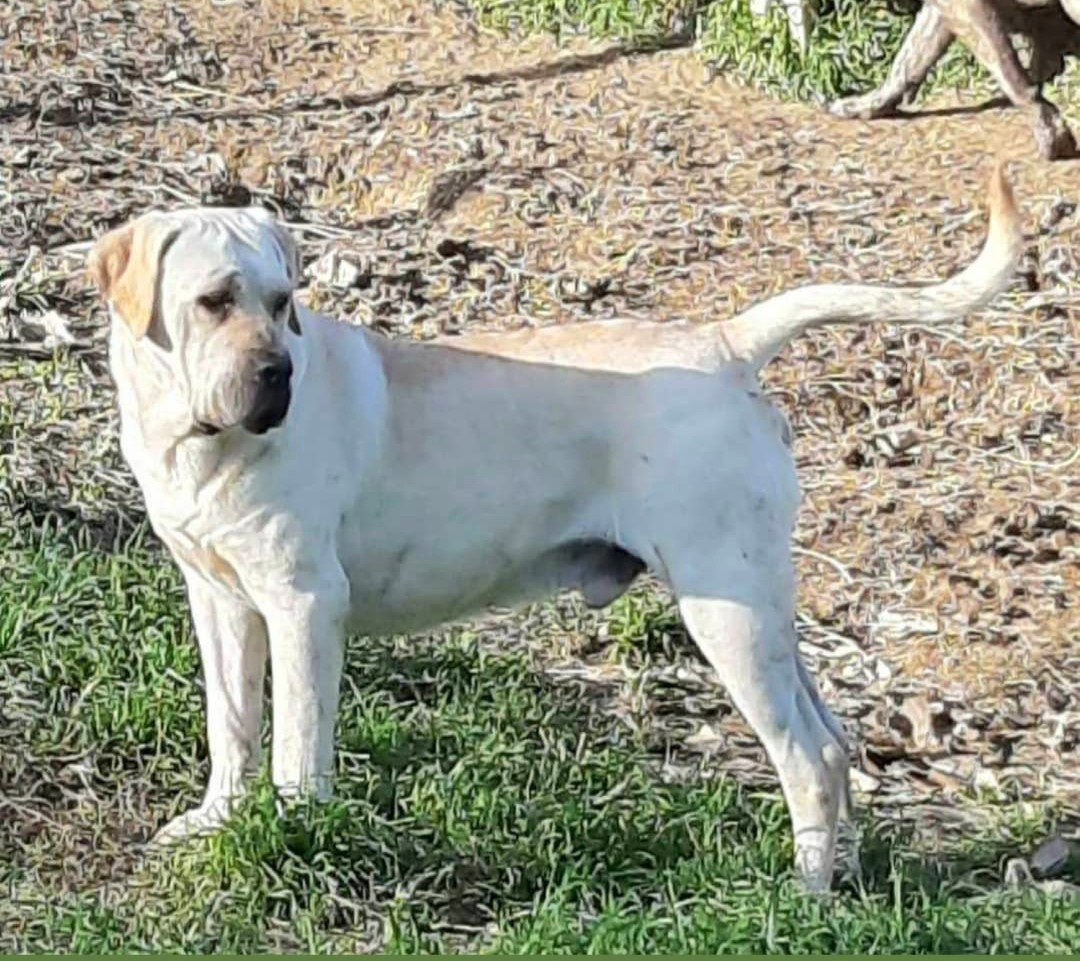
The all-white Cane Corso represents one of the rarest and most debated color variations within this ancient Italian breed. While not recognized by major kennel clubs, historical records from pre-standardization era show evidence of light-colored "Cane da Pagliaio" (straw dogs) used as guardians of farm properties. Recent genetic studies analyzing over 23,000 Cane Corsos have revealed complex inheritance patterns for coat colors, suggesting the involvement of multiple genes including sex-linked traits. This unique coloration, characterized by a pure white coat without the typical black mask, continues to generate significant interest among breed enthusiasts and researchers studying canine genetics.
All White Cane Corso
Straw White Coloration
The straw-colored or nearly white Cane Corso, historically known as "Cane de Pagliaio" (straw dog), has roots in ancient Italian farming communities according to historical records. These dogs were specifically bred to guard straw stacks and farm resources, with their light coloring believed to indicate a "flammable" temperament matching their protective duties. Unlike pure white specimens, straw-colored Corsos display a cream or off-white coat without the characteristic black mask and nose pigmentation typical of standard colorations.
Genetic Inheritance Patterns
Research analyzing over 23,000 Cane Corsos has revealed complex inheritance patterns for coat colors in the breed. According to genetic studies, the transmission of lighter coat colors like straw white doesn't follow simple Mendelian inheritance rules, suggesting multiple genes are involved. The research indicates at least one coat color gene may be sex-linked, impacting color expression differently between males and females. This genetic complexity helps explain why achieving consistent light coat colors in breeding programs can be challenging, making true straw white specimens relatively uncommon in the breed.
What is a White (Straw) Cane Corso? History & Origins of the White Cane Corso
Physical Characteristics and Recognition
The straw white Cane Corso represents a distinct variation from the standard breed colors, characterized by a cream to near-white coat without the typical black mask or black nose pigmentation. Despite their unique coloring, these dogs maintain the imposing physical traits of the breed, including a muscular build, large head, and powerful frame that can exceed 100 pounds. Their appearance combines the breed's characteristic noble bearing with their distinctive light coloration.
Traditional Role and Purpose
While the previous sections covered genetic aspects, this section focuses specifically on their historical function. These light-colored Corsos served a specialized purpose as "Cane de Pagliaio" (straw dogs), specifically tasked with guarding farm storage areas containing wheat, fodder, and other agricultural resources. The straw stacks they protected served as vital winter shelters for farm animals. Italian farmers traditionally believed these lighter-colored dogs possessed heightened protective instincts, metaphorically comparing their temperament to the flammability of straw. This specialized role distinguished them from other working Corsi of the era, creating a unique niche that contributed to preserving this color variation through generations of selective breeding.
All White Cane Corso
Health and Longevity Considerations
While straw white Cane Corsos share the same general health profile and lifespan of 9-12 years as other coat colors, their light pigmentation requires special attention. Lighter-colored dogs may be more sensitive to sun exposure and require additional protective measures. The health factors affecting their longevity remain consistent with the breed standard, including proper nutrition, regular veterinary care, and attention to common breed-specific conditions like hip dysplasia and bloat.
Socialization Requirements
Light-colored Cane Corsos require the same intensive socialization as their darker counterparts, though their unusual coloring may affect how other dogs and people respond to them. Early and consistent socialization remains critical, particularly during puppyhood, to ensure proper behavioral development. While their protective instincts are just as strong as traditionally colored Corsos, proper training helps channel these traits appropriately. Their imposing size combined with their striking appearance means owners must be particularly diligent in socializing these dogs to prevent any fear-based reactions from others that could impact the dog's social development.
Conclusion
The research reveals that straw white Cane Corsos, historically known as "Cane de Pagliaio," represent a distinct and specialized variation of the breed with deep roots in Italian farming communities. These dogs were specifically bred to guard agricultural resources, particularly straw stacks, with their light coloration believed to indicate an especially protective temperament. Genetic studies involving over 23,000 Cane Corsos have shown that the inheritance of their unique cream to near-white coat coloring involves complex patterns and potentially sex-linked genes, making true straw white specimens relatively rare.
While these dogs maintain the impressive physical characteristics and protective instincts typical of the breed, their light pigmentation requires special consideration regarding sun exposure and protection. Like all Cane Corsos, they need extensive socialization and training, though their unusual coloring may influence how others interact with them. Understanding their distinct heritage, genetic complexity, and specific care requirements is crucial for preserving this historical variant of the breed while ensuring their health and proper development in modern contexts.